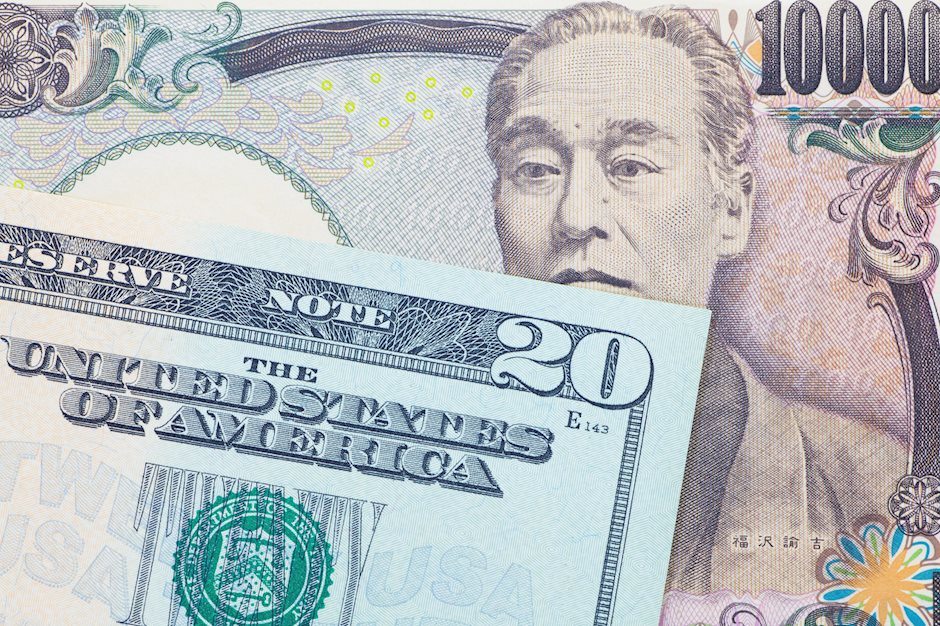USD/JPY climbs further beyond 147.00 mark, highest since August 20
- USD/JPY gains positive traction for the second straight day and seems poised to climb further.
- The uncertainty over future BoJ rate hikes weighs on the JPY and acts as a tailwind for the pair.
- Reduced bets for an oversized Fed rate cut in November underpin the USD and remain supportive.

The USD/JPY pair builds on the previous day's breakout momentum through the 50-day Simple Moving Average (SMA) and attracts some follow-through buyers for the second straight day on Thursday. This also marks the third day of a positive move in the previous four and lifts spot prices to the 147.20-147.25 region, or the highest level since August 20 during the Asian session.
The Japanese Yen (JPY) is undermined by blunt comments on monetary policy from the new Prime Minister Shigeru Ishiba on Wednesday, saying that Japan is not in an environment for an additional rate increase. Adding to this, Japan's newly appointed economy minister, Ryosei Akazawa, expects the Bank of Japan (BoJ) to make careful economic assessments when raising interest rates again. This, along with the political uncertainty ahead of the October 27 snap election, continues to weigh on the JPY and acts as a tailwind for the USD/JPY pair.
Meanwhile, the US Dollar (USD) manages to preserve this week's strong recovery gains and stands tall near a three-week high amid diminishing odds for a more aggressive policy easing by the Federal Reserve (Fed). In fact, the markets have been scaling back their bets for another oversized Fed rate cut in November in the wake of a still resilient US labor market, reaffirmed by the upbeat ADP report on Wednesday. This is seen as another factor contributing to the bid tone surrounding the USD/JPY pair and supports prospects for additional gains.
Even from a technical perspective, the overnight sustained break and close above the 50-day SMA, for the first time since mid-July, was seen as a fresh trigger for bulls. Furthermore, positive oscillators on the daily chart validate the constructive outlook and suggest that the path of least resistance for the USD/JPY pair is to the upside. Traders now look forward to the US economic docket – featuring Weekly Initial Jobless Claims and the ISM Services PMI. This, along with Fedspeak, will influence the buck and provide some impetus to the currency pair.
Bank of Japan FAQs
The Bank of Japan (BoJ) is the Japanese central bank, which sets monetary policy in the country. Its mandate is to issue banknotes and carry out currency and monetary control to ensure price stability, which means an inflation target of around 2%.
The Bank of Japan embarked in an ultra-loose monetary policy in 2013 in order to stimulate the economy and fuel inflation amid a low-inflationary environment. The bank’s policy is based on Quantitative and Qualitative Easing (QQE), or printing notes to buy assets such as government or corporate bonds to provide liquidity. In 2016, the bank doubled down on its strategy and further loosened policy by first introducing negative interest rates and then directly controlling the yield of its 10-year government bonds. In March 2024, the BoJ lifted interest rates, effectively retreating from the ultra-loose monetary policy stance.
The Bank’s massive stimulus caused the Yen to depreciate against its main currency peers. This process exacerbated in 2022 and 2023 due to an increasing policy divergence between the Bank of Japan and other main central banks, which opted to increase interest rates sharply to fight decades-high levels of inflation. The BoJ’s policy led to a widening differential with other currencies, dragging down the value of the Yen. This trend partly reversed in 2024, when the BoJ decided to abandon its ultra-loose policy stance.
A weaker Yen and the spike in global energy prices led to an increase in Japanese inflation, which exceeded the BoJ’s 2% target. The prospect of rising salaries in the country – a key element fuelling inflation – also contributed to the move.
Author

Haresh Menghani
FXStreet
Haresh Menghani is a detail-oriented professional with 10+ years of extensive experience in analysing the global financial markets.

















